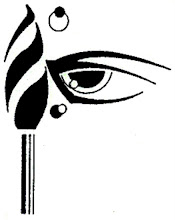Want to Invest Culturally? Buy Museum Bonds
Weapons manufacturers and tobacco industry are an obvious no-no. Most banks are iffy taking into account the financial sector’s ethical track record. The same is true for the fraudulent likes of Volkswagen. Times are tough for investors with a conscience. Where can you deposit your money and be sure it won’t have negative effects? Well, you could invest in a museum. The Cobra Museum in Amstelveen offers bonds to help finance its shows. Last year’s From the Guggenheim Collection to the Cobra Museum served as a pilot project. At the start of the second round, tied to the current Miró & Cobra show, the museum has gone public with its innovative new financing model.
The investing companies are called Cobra Entrepreneurs. They put up €25,000 each for a transferable bond and the money is paid back in full when the visiting numbers have surpassed 60,000. Moreover, they get an in kind return on investment of 10 percent, consisting of free tours by staff, use of museum space, or extra tickets for personnel. With 67,767 visitors the Guggenheim exhibition easily reached the target and expectations are that Miró will do just as well. Three local companies were confident enough to invest.
Miró & Cobra, 2015, Installation view. Courtesy of Cobra Museum voor Moderne Kunst, Amstelveen. ©2015 Photo: Peter Tijhuis
Coming from a situation of almost complete state sponsorship, museum managements in the Netherlands have since the late 1980s feverishly developed new ways to attract private funds. Most efforts are aimed at forging relationships with friends, donors, and patrons, but a few more inventive schemes have been devised that present museum funding in mainstream financial terms. The photography museum FOAM, for example, came up with Foam Fund stock options in 2006. That sounded very Wall Street but was actually a thinly disguised donor program, promising investors a limited edition print in return for their support.
Rather than an outright gift, Cobra Entrepreneurs is a gift until it becomes a loan. The bonds are a clever way for the museum to minimize risk. The €75,000 investment is linked to the amount the museum needs to retrieve from ticket and catalogue sales. But the role of investors goes beyond being guarantors. They are wooed as active stakeholders, sharing responsibility for the show’s success. They use their own marketing and communication apparatus for promotional activities and act as individual ambassadors in their business and personal networks. It not only saves the museum PR-funds but also enables it to bring its message across to an audience it might never reach otherwise. The diverse mix of companies acting as Cobra Entrepreneurs—a law firm, a local bank, and a car company—maximizes the impact.
This system of bonds is new for Dutch museums but has precedent in the local film industry. In 2014 and 2015, together with Symbid, the now defunct film distributor A-Film attracted between €20,000 and €100,000 for four films, De Surprise being the most recent. In these cases extra publicity and marketing power was also the driving force, but there was a serious business component attached to this form of crowdfunding. If 200,000 tickets sold, De Surprise investors, who paid a minimum of €100, got their money back. If more than 250,000 people went to see the film, they would receive an additional 3 percent return on investment. And this percentage would increase up to 15 percent if box office numbers went beyond 400,000—a return on investment well above the 7 percent stock options yield on average.
And that’s not even the best your money can do in a cultural investment portfolio. For ten years the Tilburg-based finance and development office EuroGroei has been operating a special film fund promising participants, who invest a minimum of €10,000, a return of investment up to 35 percent. Up till now 24 films have successfully been financed. Currently the company is collecting funds for Tulips, Love, Honour and a Bike, the new film by Oscar-winning Marleen Gorris, and 65 percent of the estimated €950,000 has been secured.
Joan Punyet Miró, grandson of Joan Miró, puts the finishing touch to recreating Miró’s studio at the Cobra Museum in Amstelveen.
©2015 Photo: Peter Tijhuis
Imagine the funds the Cobra Museum could attract if it paid a return on investment. But it can’t. Because it’s forbidden to do so. Policy makers in The Hague—yes, the same as those egging museums on to be more entrepreneurial—don’t allow museums to issue real, interest-yielding bonds. Siebe Weide, director of the Nederlandse Museumvereniging (Dutch Museum Association), has been pleading for a change of rules for some time now. He has pointed out American museums like New York’s Metropolitan Museum of Art as leading examples of cultural institutions operating independently by employing investment tools.
Every remedy comes with a caution, though. Bonds could be an effective means to increase museums’ working capital and finance expensive exhibitions, but concentrating solely on this market instrument could seriously affect museum programs. They would increasingly be geared towards blockbusters, safe investments that are bound to yield dividend. More risky shows would not likely find investors. And that’s what makes Cobra Entrepreneurs attractive. Investors are not driven by financial gain but by their civic pride in supporting a public art institution, though it’s unclear whether appeals to civic pride would be quite so successful in the case of a more esoteric exhibition. Museums still need to strike a balance, with programs like Cobra Entrepreneurs as just one strategy within a diversified funding toolbox. And in the end, the cultural return on investment probably proves to be more durable.







